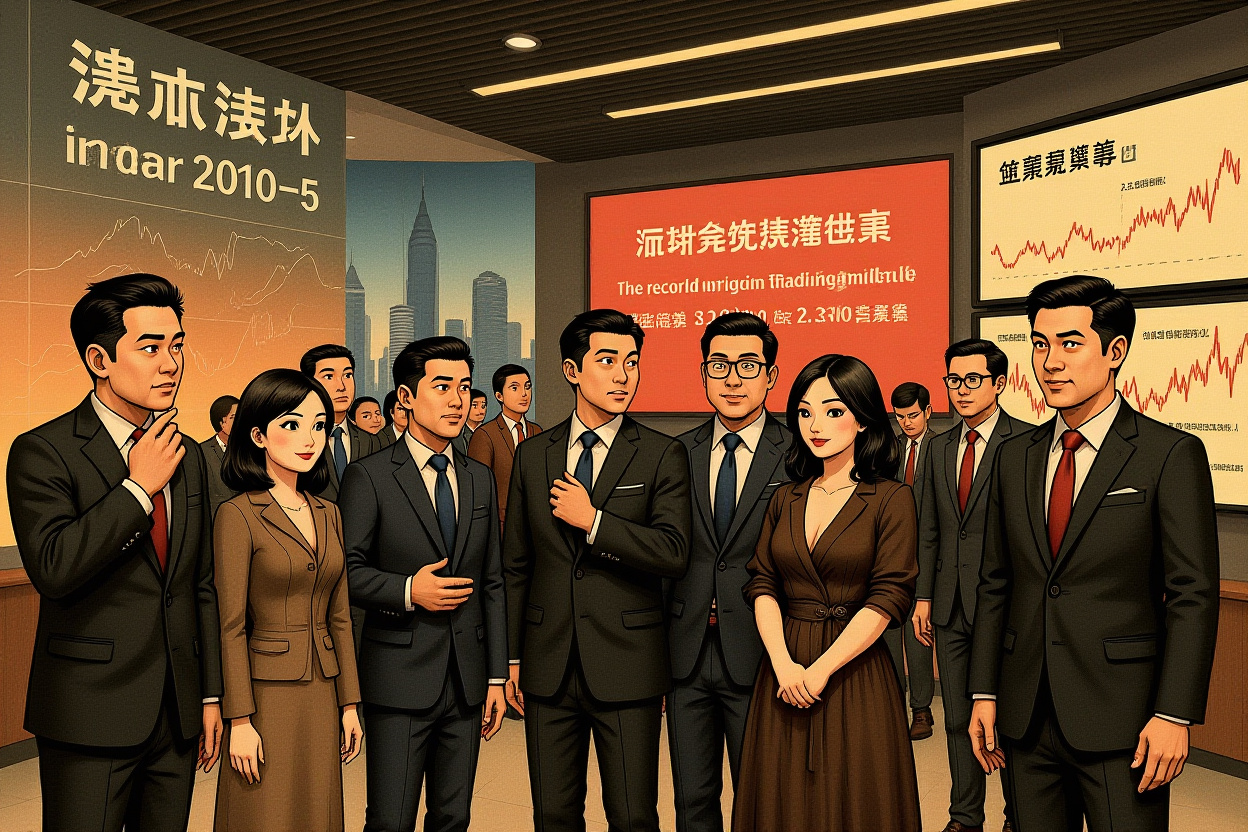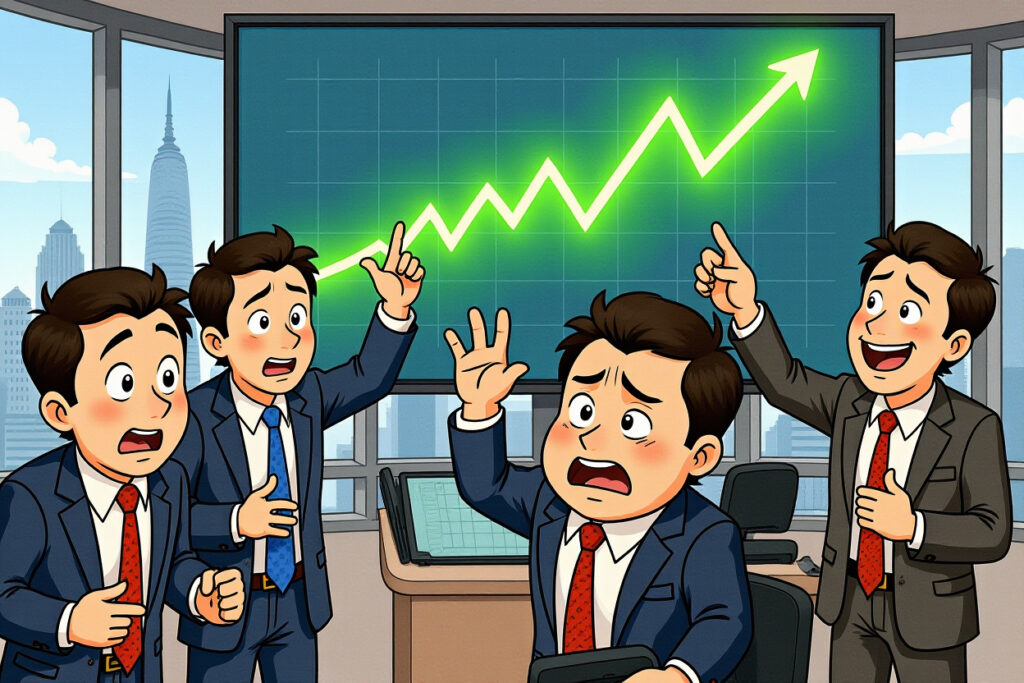Historic Milestone in China’s Stock Market
China’s A-share market has reached a significant milestone as the margin trading balance surged to a record 2.3 trillion yuan, surpassing the previous peak seen during the 2015 bull market. This achievement marks an important moment in the evolution of China’s financial markets, reflecting both increased investor participation and more sophisticated market mechanisms.
On September 1, 2025, the margin trading balance reached 2.296991 trillion yuan, breaking the 2015 record. The following days saw continued strength in margin trading activity, with the balance reaching 2.319718 trillion yuan by September 9. This remarkable growth comes despite periodic market fluctuations, demonstrating sustained investor confidence in China’s equity markets.
Key Differences Between 2025 and 2015 Margin Trading Markets
The current margin trading environment differs substantially from the 2015 market peak in several important aspects. While the absolute numbers show growth, the underlying market structure and risk profile have evolved significantly.
Expanded Market Coverage and Diversity
The number of stocks eligible for margin trading has increased dramatically from 912 in 2015 to 4,239 in 2025. This expansion reflects both market growth and regulatory changes that have made more companies accessible to leveraged trading. The broader selection allows for better diversification and reduces concentration risk that characterized the 2015 market.
This diversification is particularly evident in sector distribution. While financial and property stocks dominated margin trading in 2015, current activity shows much broader participation across technology, consumer, and industrial sectors.
Lower Relative Leverage Ratios
Despite the record absolute numbers, the margin trading balance as a percentage of total market capitalization remains significantly lower than in 2015. Current levels stand at approximately 2.5% compared to over 4% during the 2015 peak. This indicates a healthier, more sustainable leverage environment with reduced systemic risk.
The lower relative leverage is particularly notable given the substantial growth in overall market capitalization over the past decade. China’s stock market has matured significantly, with increased institutional participation and more sophisticated risk management practices.
Structural Changes in Investor Participation
The profile of margin trading participants has changed substantially since 2015, reflecting broader changes in China’s investment landscape and regulatory environment.
Growing Retail Investor Base
The number of individual investors participating in margin trading has doubled from approximately 3.8 million in 2015 to over 7.6 million in 2025. This growth demonstrates increasing retail investor sophistication and access to leveraged trading tools. However, the average leverage per investor has decreased from 1.64 million yuan to 1.28 million yuan, indicating more conservative positioning.
Daily participation rates have also changed significantly. While peak daily participation reached about 670,000 investors in late August 2025, this represents a smaller percentage of total eligible investors compared to 2015 levels, suggesting more selective use of leverage.
Improved Regulatory Framework
Current margin trading activity occurs within a much more robust regulatory framework. Stricter controls on shadow banking and informal lending channels have eliminated many of the excessive leverage practices that contributed to the 2015 market volatility. According to Western Securities strategist Xu Jiaqi (徐嘉奇), ‘The current regulatory environment ensures that margin trading remains the primary controlled channel for leverage, unlike 2015 when uncontrolled shadow banking products created systemic risks.’
The regulatory improvements have created a more transparent and stable environment for leveraged trading, with better risk management protocols and more effective oversight mechanisms.
Sector Analysis and Allocation Trends
The distribution of margin trading activity across sectors reveals important shifts in market sentiment and investment priorities since 2015.
Technology Sector Dominance
The technology sector, particularly artificial intelligence, semiconductors, and communications, has attracted significant margin trading activity. The ChiNext board, representing growth companies, has seen its margin trading balance increase by 367% since 2015, reaching 484.5 billion yuan. This contrasts sharply with the 39.8% decline in margin trading balance for CSI 300 components, indicating a clear preference for growth over value stocks.
This sector concentration reflects both market trends and policy direction. Government support for technology innovation and domestic semiconductor development has created strong fundamental support for these sectors, unlike the more speculative nature of the 2015 internet stock rally.
Traditional Sector Outflows
Margin trading activity has significantly decreased in traditional sectors including banking, real estate, and commodities. The banking sector has seen a 54.8% decline in margin trading balance since 2015, while real estate has dropped 61.2%. These outflows reflect changing economic priorities and investor preferences toward new economy sectors.
The shift away from traditional sectors also indicates improved market efficiency, with leverage being allocated to sectors with stronger growth prospects rather than cyclical industries facing structural challenges.
Risk Assessment and Market Stability
While the record margin trading balance raises concerns about potential overheating, several factors suggest the current situation is fundamentally different from 2015.
Improved Fundamentals Support
Unlike the 2015 rally which was largely driven by speculation, current margin trading activity is supported by stronger fundamentals. Leading AI companies have shown average earnings growth of 207% in the first half of 2025, compared to the 50.6% growth seen during the 2015 internet stock rally. This earnings support provides a stronger foundation for current valuations.
The quality of companies attracting leverage has also improved significantly. Many current margin trading favorites have established business models and proven profitability, reducing the risk of valuation bubbles based purely on narrative.
Concentrated Risk in Specific Sectors
While overall market leverage remains reasonable, certain sectors show signs of potential overheating. AI-related stocks have seen margin trading account for 15.64% of total trading volume, exceeding levels seen during the 2015 internet stock peak. Some individual stocks show concerning metrics, with companies like Chuanzhong Technology trading at price-to-earnings ratios exceeding 1,000.
However, these concentrations appear limited to specific segments rather than representing broad market excess. The diversified nature of current margin trading activity helps mitigate systemic risk from any single sector correction.
Investment Implications and Strategy Recommendations
For investors navigating the current margin trading environment, several strategic considerations emerge from the analysis of current market conditions.
Portfolio Construction Considerations
– Monitor sector leverage ratios regularly, paying particular attention to sectors showing rapid increases in margin trading activity
– Combine leverage analysis with fundamental research to identify sectors with both reasonable leverage and strong growth prospects
– Maintain diversified exposure across sectors to avoid concentration risk in high-leverage areas
– Adjust allocations dynamically as market conditions and leverage patterns evolve
Risk Management Practices
– Maintain conservative leverage ratios appropriate for individual risk tolerance and investment objectives
– Implement strict stop-loss protocols to manage downside risk in leveraged positions
– Monitor regulatory developments that might affect margin trading availability or requirements
– Maintain adequate cash reserves to withstand market volatility and take advantage of opportunities
Future Outlook and Market Evolution
The evolution of China’s margin trading market reflects broader changes in the country’s financial system and investor behavior. The current record balance, while numerically similar to 2015, represents a much more mature and sustainable market structure.
Looking forward, margin trading is likely to continue growing as investor sophistication increases and market mechanisms evolve. However, the improved regulatory framework and better risk management practices should help prevent the excesses that characterized previous market cycles. The focus on fundamentals rather than speculation, combined with diversified sector participation, suggests a healthier long-term trajectory for China’s leveraged trading market.
For investors, the current environment offers opportunities but requires careful risk management and sector selection. The lessons from 2015 have been learned, and the market appears better positioned for sustainable growth supported by reasonable leverage levels and strong fundamentals.




